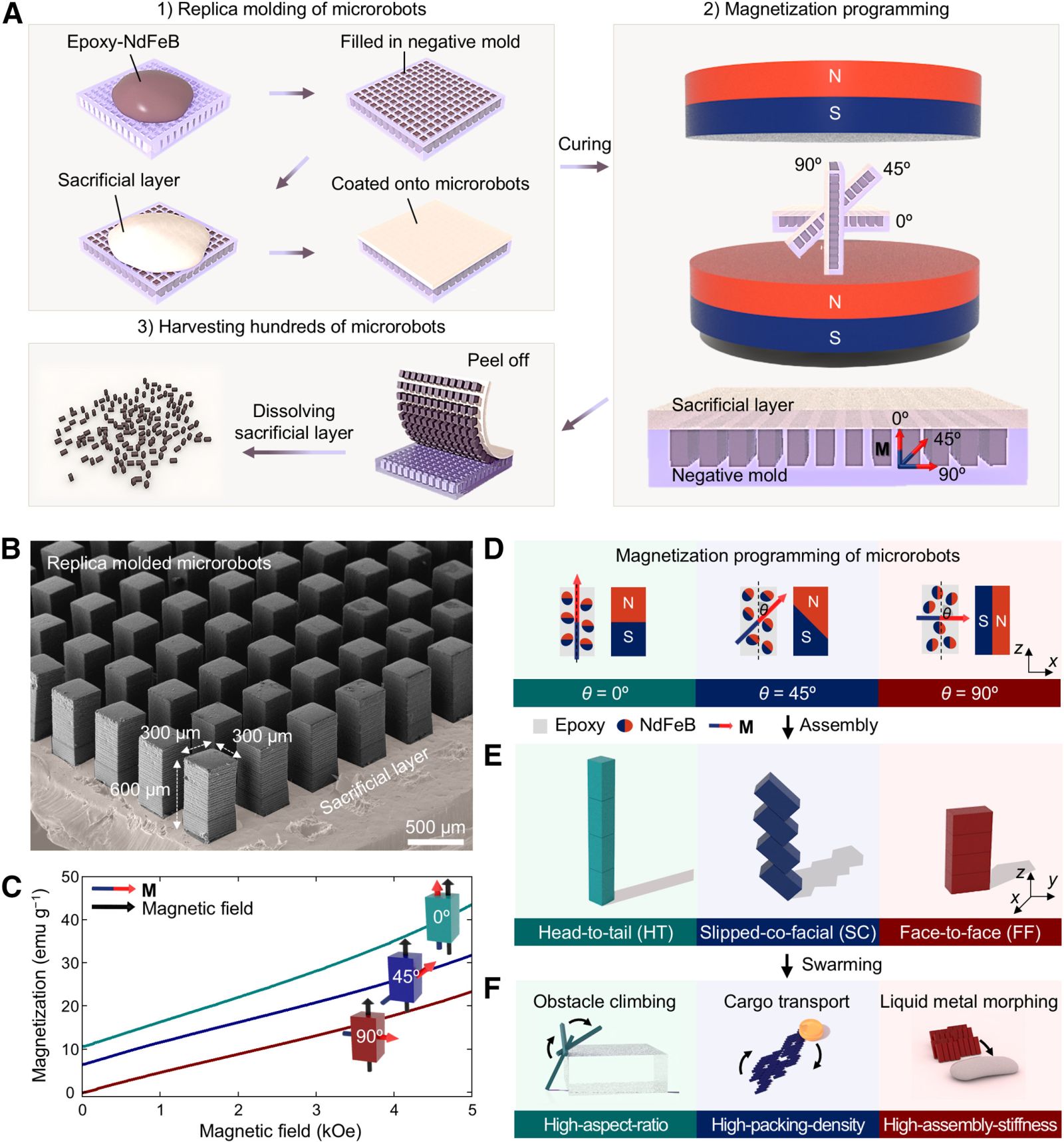This swarm of mini-robots achieves unprecedented feats 🐜
Published by Cédric,
Author of the article: Cédric DEPOND
Source: Cell Press
Other Languages: FR, DE, ES, PT
Author of the article: Cédric DEPOND
Source: Cell Press
Other Languages: FR, DE, ES, PT
Follow us on Google News (click on ☆)

At Hanyang University in Seoul, a team designed microrobots measuring 600 micrometers (0.024 inches), made of epoxy resin and ferromagnetic particles. These robots can assemble and reorganize themselves using a rotating magnetic field, enabling them to perform complex actions.
The key to their operation lies in their ability to work together, like ants. During tests, the microrobots formed floating rafts and transported loads far heavier than themselves, up to 2000 times their own weight. Furthermore, they successfully overcame obstacles five times taller than their own height.
These microrobots have also demonstrated their usefulness in medical scenarios. For instance, they simulated a process of unblocking clogged blood vessels, also offering perspectives for less invasive treatments, such as targeted drug delivery.
The researchers also explored using these robots to guide small organisms. By using rotational and orbital pulling movements, the microrobots showcased their potential to manipulate tiny objects with high precision.
However, research on these microrobots is still at an early stage. The robots still require external magnetic control and cannot move autonomously in complex environments, such as human arteries.

Mass production of magnetically anisotropic microrobots for multifunctional swarm intelligence
Despite these limitations, the team highlights the possibility of improving the autonomy (ability to move independently) of these robotic swarms. Future work will focus on integrating real-time feedback to optimize their paths and behaviors.
The potential applications for medicine and industry are numerous. If these microrobots can achieve better autonomy, they could offer innovative solutions for complex tasks in hard-to-access environments, such as the human body.
The mass production of these microrobots is also a significant advancement. Researchers have developed a molding and on-site magnetization method, ensuring rapid and low-cost production of robots with uniform characteristics.